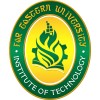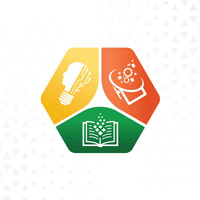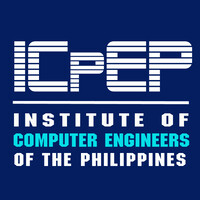Moises F. Jardiniano
AssociatePersonal Information
Caloocan, Metro Manila · FEU Institute of Technology
Personal Information
Short Biography
Moises F. Jardiniano is an educator and professional in Computer Engineering, currently serving as a faculty member at the FEU Institute of Technology. With over 26 years of experience, he specializes in teaching Cisco Networking Courses. Moises holds a Master’s degree in Computer Engineering from Pamantasan ng Lungsod ng Maynila and a Bachelor’s degree from FEU Institute of Technology. He is recognized for his exceptional contributions to the Cisco Networking Academy, where he has been honored as a Recognized Expert Level Instructor consistently from 2014 to 2023. He has been ranked in the top 10% of Cisco Networking Academy instructors globally for multiple years, reflecting his dedication and expertise in the field. Moises is also a certified Professional Computer Engineer (PCpE) and a Lifetime Member of the Institute of Computer Engineers of the Philippines.
Skills
Computer Networking
Competent (70%)
Communication
Competent (70%)
Cloud Computing
Beginner (60%)
Computer Hardware
Competent (70%)
Programming
Competent (70%)
Educational Qualification

Masteral · Jun 2016 - Apr 2019
Master of Engineering
Pamantasan ng Lungsod ng Maynila (PLM)

Tertiary · Jun 1994 - Mar 1998
Bachelor of Science in Computer Engineering
FEU Institute of Technology
Work Experience

Full-time · Jul 2022 - Jul 2023 (1 year)
Assistant Director at FEU Institute of Technology
Computer Engineering Department

Full-time · Jun 2022 - Present (3 years)
Instructor at AWS Academy
NULL

Full-time · Jul 2019 - Jul 2022 (3 years)
Director at FEU Institute of Technology
Computer Engineering Department

Full-time · Jun 2008 - Present (17 years)
Instructor at Cisco Networking Academy
NULL

Full-time · May 1998 - Present (27 years and 1 month)
Faculty at FEU Institute of Technology
Computer Engineering Department
Honors and Awards

Instructor Excellence Awardee 2023 - Expert (Instructor Recognition)
Issued by Cisco Networking Academy on December 31, 2023
Top 10% of Cisco instructors globally for 2023

Instructor Excellence Awardee 2022 - Expert
Issued by Cisco Networking Academy on June 01, 2022
Top 10% of Cisco instructors globally for 2022

Instructor Excellence Awardee 2021 - Expert
Issued by Cisco Networking Academy on June 01, 2021
Top 10% of Cicso instructors globally for 2021.

Instructor Excellence Awardee 2020 - Expert
Issued by Cisco Networking Academy on June 01, 2020
Top 10% of Cisco instructors globally for 2020.

Instructor Excellence Awardee 2019 - Expert
Issued by Cisco Networking Academy on June 01, 2019
Top 10% of Cisco instructors globally for 2020.
Licenses and Certifications

AWS Certified Cloud Practitioner
Issued by Amazon Web Services (AWS) on January 02, 2022
View Credential
Professional Computer Engineer
Issued by Computer Engineering Certification Board on December 31, 2021
Seminars and Trainings

Attendee
Mastering 5S: Enhancing Workplace Efficiency and Organization
Awarded by FEU Tech Quality Assurance Office on September 23, 2024
View Credential
Attendee
AI in the Workplace: Practical Applications for Educators and Associates to Improve Teaching and School Management
Awarded by Educational Innovation and Technology Hub on August 14, 2024
View Credential
Attendee
Review of Complex Engineering Problems
Awarded by FEU Tech College of Engineering on August 12, 2024
View Credential
Attendee
Data Privacy Act Awareness Seminar
Awarded by FEU Tech Human Resources Office on August 07, 2024
View Credential
Attendee
Enhancing Physical and Mental Resilience in the Workplace
Awarded by FEU Tech Human Resources Office on August 05, 2024
View CredentialOrganizations and Memberships

Institute of Computer Engineers of the Philippines (ICpEP)
Lifetime Member · June 01, 2008 - Present
Research Publications
Conference Paper · DOI: 10.1109/HNICEM60674.2023.10589148
(Digital) Reading Free Vocational Interest Inventory Testing Tool
2023 IEEE 15th International Conference on Humanoid, Nanotechnology, Information Technology, Communication and Control, Environment, and Management, HNICEM 2023, 2023
![]() Moises F. Jardiniano
Moises F. Jardiniano
![]() Abella R.U.
Abella R.U.
![]() Bugtay A.M.Y.
Bugtay A.M.Y.
![]() Pineda K.M.P.
Pineda K.M.P.
![]() Reynoso Z.A.S.
Reynoso Z.A.S.
![]() Villanueva B.A.A.
Villanueva B.A.A.
![]() Jamie Adrian D. Jamasali
Jamie Adrian D. Jamasali
![]() Bayono M.E.P.
Bayono M.E.P.
Human curiosity and the pursuit of areas of interest are fundamental drivers of exploration and skill development. One avenue for understanding vocational interests is the Reading-Free Vocational Interest Inventory Third Edition (RFVII-3), particularly relevant for individuals, including those with mental disabilities. The RFVII-3 assesses vocational interests and aligns individuals with specific vocational clusters. However, its traditional face-to-face, one-on-one administration, and manual scoring present significant challenges, consuming approximately 1.5 hours. This paper presents a novel approach to streamline the RFVII-3 assessment process by developing a digital prototype. This device captures and scores RFVII-3 item images selected by examinees, instantly aligning them with relevant vocational clusters. The result is generated in less than five seconds after completing the last item, effectively expediting vocational interest assessment. This innovative technology promises to enhance the efficiency and accessibility of vocational interest assessment, particularly benefiting individuals with intellectual disabilities.
Conference Paper · DOI: 10.1063/5.0108986
Chessbot: A Voice-Controlled Chess Board with Self-Moving Pieces
AIP Conference Proceedings, 2022, 2502
![]() Nino U. Pilueta
Nino U. Pilueta
![]() Grimaldo H.D.
Grimaldo H.D.
![]() Moises F. Jardiniano
Moises F. Jardiniano
![]() Manuel B. Garcia
Manuel B. Garcia
Automated chess is an emerging challenge from the field of robotics to human interaction. Customarily, chess playing robots use video camera for detecting the state of the board and robotic arm to manipulate the pieces, which makes it either expensive or too fragile to move. In this study, an automated chess board called “Chessbot” was built by combining a multitude of technologies and techniques such as voice command recognition, x and y plotting and recognition of chess pieces in a Cartesian plane, artificial intelligence algorithm, and Android mobile application. To properly execute chess moves either from a human player or computer via voice commands or a mobile game interface, the microcontroller provides motors the current and landing squares of chess pieces on the board. For the evaluation, several matches were simulated to perform various testing procedures such as voice command recognition, move log accuracy, display and user input acceptance accuracy, self-arrangement, and chess move reliability. Upon testing, Chessbot performs all the necessary tasks efficiently and accurately, which indicates the possibility of using this automated device for chess games at a hobby-level or professional matches.
Conference Paper · DOI: 10.1109/HNICEM57413.2022.10109459
Microprocessor-Based Interactive Mathematics Learning Tool using Real-Time Computer-Vision
2022 IEEE 14th International Conference on Humanoid, Nanotechnology, Information Technology, Communication and Control, Environment, and Management, HNICEM 2022, 2022
![]() Galvez J.P.B.
Galvez J.P.B.
![]() Guerrero J.C.S.
Guerrero J.C.S.
![]() Hernani J.M.B.
Hernani J.M.B.
![]() Jamie Adrian D. Jamasali
Jamie Adrian D. Jamasali
![]() Nino U. Pilueta
Nino U. Pilueta
![]() Moises F. Jardiniano
Moises F. Jardiniano
When it comes to learning, there are beneficial effects of incorporating gestures in learning mathematics especially within the early ages of life. At first, we learn Math by counting and incorporating our fingers as a guide, as well as writing numbers along on a piece of paper. These gestures are known to be examples of hands-on learning experience for children. Aside from counting, they learn basic mathematical operations as well.Teaching children mathematics is not an easy task. The child's attentiveness plays a huge factor in the learning process. The average attention span of the child from 2 to 10 years of age is 20 to 30 minutes only. Making the learning interactive can help in maximizing the learning experience of the child within the timespan. Thus, we aim to develop a compact device that is interactive with children when it comes to learning basic mathematical operations such as addition, subtraction, and multiplication.This device has software that uses computer-vision and image detection as a way of teaching children math in an interactive way. The child has two different options of answering, by using hand gestures or premade printed numbers. The child is asked five random basic mathematical questions within a time limit. It has three levels of difficulty which the child must pass in order to progress each level. Furthermore, the software also has audio feedback as a way of letting the child know the correct answer. With these features, children are engaged in an interactive learning opportunity in mathematics.
Conference Paper · DOI: 10.1109/HNICEM57413.2022.10109384
Microprocessor-Based Interactive Mathematics Learning Tool using Real-Time Computer-Vision
2022 IEEE 14th International Conference on Humanoid, Nanotechnology, Information Technology, Communication and Control, Environment, and Management, HNICEM 2022, 2022
![]() Galvez J.P.B.
Galvez J.P.B.
![]() Guerrero J.C.S.
Guerrero J.C.S.
![]() Hernani J.M.B.
Hernani J.M.B.
![]() Jamie Adrian D. Jamasali
Jamie Adrian D. Jamasali
![]() Nino U. Pilueta
Nino U. Pilueta
![]() Moises F. Jardiniano
Moises F. Jardiniano
When it comes to learning, there are beneficial effects of incorporating gestures in learning mathematics especially within the early ages of life. At first, we learn Math by counting and incorporating our fingers as a guide, as well as writing numbers along on a piece of paper. These gestures are known to be examples of hands-on learning experience for children. Aside from counting, they learn basic mathematical operations as well.Teaching children mathematics is not an easy task. The child's attentiveness plays a huge factor in the learning process. The average attention span of the child from 2 to 10 years of age is 20 to 30 minutes only. Making the learning interactive can help in maximizing the learning experience of the child within the timespan. Thus, we aim to develop a compact device that is interactive with children when it comes to learning basic mathematical operations such as addition, subtraction, and multiplication.This device has software that uses computer-vision and image detection as a way of teaching children math in an interactive way. The child has two different options of answering, by using hand gestures or premade printed numbers. The child is asked five random basic mathematical questions within a time limit. It has three levels of difficulty which the child must pass in order to progress each level. Furthermore, the software also has audio feedback as a way of letting the child know the correct answer. With these features, children are engaged in an interactive learning opportunity in mathematics.
Conference Paper · DOI: 10.1109/IICAIET51634.2021.9573811
Drive-Awake: A YOLOv3 Machine Vision Inference Approach of Eyes Closure for Drowsy Driving Detection
3rd IEEE International Conference on Artificial Intelligence in Engineering and Technology, IICAIET 2021, 2021
![]() MacAlisang J.R.
MacAlisang J.R.
![]() Alon A.S.
Alon A.S.
![]() Moises F. Jardiniano
Moises F. Jardiniano
![]() Evangelista D.C.P.
Evangelista D.C.P.
![]() Castro J.C.
Castro J.C.
![]() Tria M.L.
Tria M.L.
Nowadays, road accidents have become a major concern. The drowsiness of drivers owing to overfatigue or tiredness, driving while intoxicated, or driving too quickly is some of the primary causes of this. Drowsy driving contributes to or increases the number of traffic accidents each year. The study presented a technique for detecting driver drowsiness in response to this issue. The sleep states of the drivers in the driving environment were detected using a deep learning approach. To assess if the eyes of particular constant face images of drivers are closed, a convolutional neural network (CNN) model has been developed. The suggested model has a wide range of possible applications, including human-computer interface design, facial expression detection, and determining driver tiredness and drowsiness. The YOLOv3 algorithm, as well as additional tools like Pascal VOC and LabelImg, were used to build this approach, which collects and trains a driver dataset that feels drowsy. The study's total detection accuracy was 100%, with detection per frame accuracy ranging from 49% to 89%.


